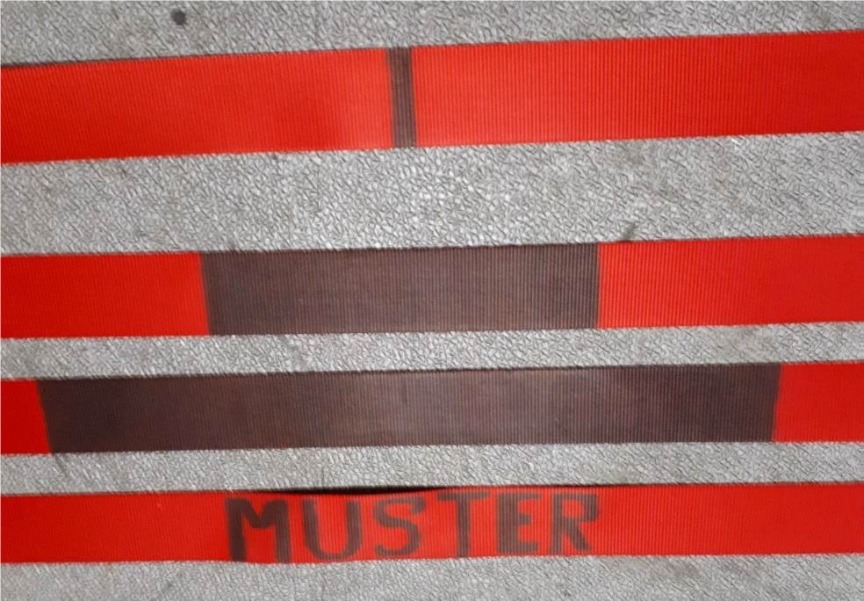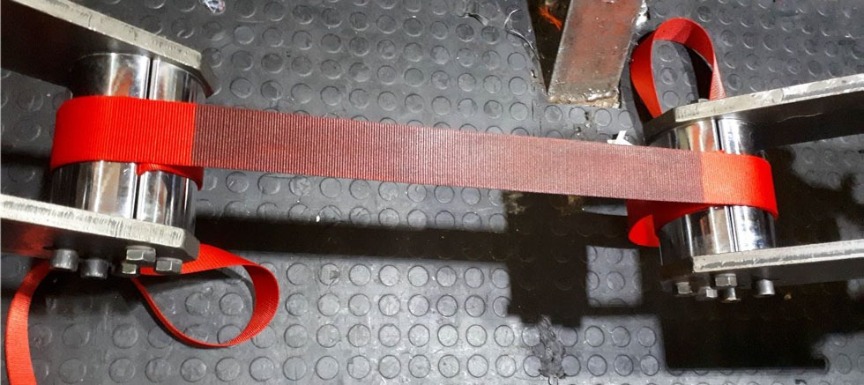...I mark my harness and webbing?
In practice, belts are often marked by users on the load-bearing / safety-relevant webbing straps using permanent markers. However, due to the information in the corresponding instructions for use, this is not permitted and the equipment must be discarded during the annual inspection by a specialist. TEUFELBERGER has now checked in an investigation whether the marking with a defined permanent marker has an effect on the breaking load of webbing.
To check the effect of markings on PES webbing from TEUFELBERGER, a total of 8 webbing straps were tested (45 mm red - Item No. 6121335). A permanent marker of the EDDING brand with the designation "edding 3000" was used for the inscription. This is the most commonly used marker in practice and is recommended by various manufacturers.
For the tests, the sample webbings were marked differently, dried naturally and then checked for their residual breaking strength. Some of the samples were tested after a period of 5 days after marking, some after a period of 8 weeks. The 8-week-old specimens were weathered outdoors for a period of 6 weeks.
The following variants were tested:
- 2 pc. without marking
- 1 pc. with full-surface marking on both sides over a length of 1 cm
- 2 pc. with full-surface marking on both sides over a length of 20 cm
- 2 pc. with full-surface marking on both sides over a length of 40 cm
- 1 pc. with the lettering "MUSTER"

Pic.1: Variants of markings on the samples

Pic.2: Test-set-up at tensile testing machine
Results & Summary
With the exception of one test, the belt strap was always torn in the free length between the clamping jaws and outside the inscription with the edding 3000. The breaking force was always within the tolerance range.
Based on the results of the tests carried out, it can be assumed that marking the webbing straps under the circumstances and criteria described alone does not lead to a safety-relevant reduction in the breaking strength of the webbing straps examined.
For the final assessment of the condition of the product at the time of the inspection, the results of this study are only generally applicable to a limited extent. For a definite assessment, more precise circumstances of the use and storage of the affected products and the type of marking (e.g. permanent marker used) would need to be known. This cannot be clearly determined only by optical inspection.
- Therefore, when assessing the condition, at least a proof of the user is required, in which the permanent marker used for marking is specified.
- Basically, to be on the safe side, a marking should always be made on a designated position on the product (see relevant information in the manufacturer information).
